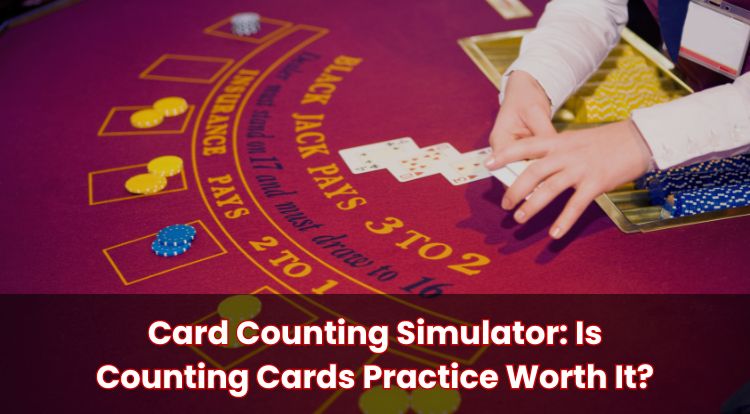MIT Blackjack Team Names, Earnings & Where They Are Now
The MIT Blackjack Team captured global attention with their strategic approach to card counting, turning the game of blackjack into a field of mathematical prowess.
In this 666Casino blog, you’ll uncover who made up the legendary team, learn about their impressive earnings, and explore how their methods led to their eventual downfall. We’ll dive into the lives of team members today, and examine whether the iconic strategies they used could still succeed in modern casinos. For those intrigued by blackjack’s strategies, we’ll also discuss playing blackjack online.
Whether you’re fascinated by casino history, or curious about card counting, this article provides a unique glimpse into a captivating chapter of casino lore.
What Is The MIT Blackjack Team?
The MIT Blackjack Team was a group of university students and alumni who used card counting and statistical strategies to win large sums at blackjack tables in casinos.
The team initially took shape in the late 1970s at the Massachusetts Institute of Technology (MIT), when a few mathematically inclined students became interested in blackjack as a game that could be approached analytically. With a methodical, disciplined approach to counting cards and managing bets, they developed a structured system to increase their odds at blackjack tables.
In 1980, a student named Bill Kaplan, already experienced in successful card counting, joined as a mentor and strategist, helping turn the team into a professionally organised operation.
With Kaplan’s guidance, the MIT Blackjack Team evolved from an informal group of students, to a well-organised enterprise. Kaplan set up a business-like structure with investor funding, rigorous training sessions, and a set of rules to guide the players’ conduct at casinos. The team was trained extensively, learning the intricacies of card counting, bankroll management, and behaviour strategies to avoid detection.
MIT Blackjack Team Names
The MIT Blackjack Team included a rotating cast of members over the years, primarily recruited from MIT and nearby universities.
Some of the most well-known players included Bill Kaplan himself, along with Johnny Chang, JP Massar (known as “Mr M”), and Mike Aponte, who later became one of the team’s primary managers.
The team was not a static group; players came and went, with Kaplan overseeing recruitment, training, and selection based on strict criteria. Each team member had a role, from “spotters” who counted cards while placing smaller bets, to “big players” who joined at critical moments to make large bets.
This dynamic team structure allowed the MIT Blackjack Team to execute their strategy across numerous casinos, managing to remain discreet while maintaining impressive wins at the tables.
MIT Blackjack Team Earnings
The MIT Blackjack Team became notable not just for their strategy, but also for the substantial earnings they reportedly amassed.
Through methodical planning and coordinated team play, they were able to turn statistically calculated strategies into significant winnings across casinos in the United States and beyond.
Estimates suggest that over the years, the team managed to win millions, with some reports indicating a total profit that may have reached as high as £10 million. This success was due to the structured investment model set up by Bill Kaplan, where team members pooled resources and operated as an organised entity, rather than individual players.
Funding was a key part of the team’s approach. Investors contributed capital in exchange for a portion of the potential earnings, similar to a business venture. With a well-funded bankroll, team members were able to make high-stakes bets when the card count was in their favour, maximising their opportunities for a potential return. This professional setup allowed the team to generate substantial profits, even after dividing winnings among investors and team members.
Individual earnings varied depending on a member’s role, involvement, and the number of successful sessions.
High-profile members like Mike Aponte and Johnny Chang were known to be among those who earned substantial amounts due to their skill and central roles within the team. However, due to the team’s collective structure, the winnings were distributed according to each player’s contribution and role, ensuring a fair return for those who participated in the team’s highly coordinated operations.
Despite their earnings, the MIT Blackjack Team faced considerable risks, including being spotted by casino staff and added to blacklists, which limited their access to some casinos.
How Did The MIT Blackjack Team Get Caught?
As the MIT Blackjack Team’s reputation grew, so did the attention they attracted from casinos. Despite their calculated approach, high-stakes betting patterns, and the frequent appearances of certain players, led casino security to become increasingly suspicious.
With many casinos employing advanced surveillance systems, staff were able to observe the team’s betting patterns, eventually identifying certain players as card counters.
The team’s consistent and coordinated wins raised red flags, prompting casinos to share information through databases of suspected card counters, which included player profiles, betting habits, and even photographs.
Casinos employ sophisticated tracking and monitoring systems to identify behaviours associated with card counting. In the UK, as in many places, card counting itself is not illegal, but casinos reserve the right to refuse service to anyone suspected of using it. This means that players who demonstrate patterns of behaviour associated with card counting can be asked to leave, or banned from returning.
Casinos are legally allowed to restrict access, and may add individuals to exclusion lists, preventing them from re-entering certain premises.
For the MIT team members, being identified as counters often meant being blacklisted from major casinos, with their photos circulated among casino staff. Security teams became adept at spotting familiar faces and flagging suspicious play, leading to the eventual decline of the team’s success.
Modern casinos in the UK and elsewhere continue to invest in technology that can identify card counters, such as facial recognition and software that tracks betting variations.
For today’s players, being caught card counting in the UK could result in an immediate request to leave the premises and potentially a ban from returning. Some may find themselves blacklisted from casinos within a larger network, limiting their access to other venues.
While card counting is a skill-based approach to blackjack, casinos are well within their rights to refuse entry to anyone they suspect of using it to try and gain an advantage.
Where Are The MIT Blackjack Team Now?
Many former members of the MIT Blackjack Team have moved on to careers outside of gambling, applying their analytical skills in various industries.
Bill Kaplan, one of the original organisers, has built a successful career in business, leveraging the strategies he refined with the team to advise and invest in new ventures. His experience in managing a disciplined, data-driven approach to blackjack translated well to other business opportunities.
Mike Aponte, another prominent member, went on to share his expertise in blackjack by becoming a professional blackjack coach. He has been involved in consulting and educating others on the techniques used by the MIT team, though with a strong emphasis on the mathematical aspects rather than the high-stakes play of his past. Aponte has also participated in professional blackjack tournaments, where skill-based play is celebrated and rules differ from traditional casino environments.
John Chang, who played a crucial role as a strategist, is known to have explored opportunities in finance, though he remains private about specific details. Chang’s experience in managing risk and making data-driven decisions was a natural fit for financial markets.
Several other team members have gone on to careers in areas like investment banking, technology, and analytics, with a few publicly sharing their insights and experiences of the planning and strategy that defined their time on the team.
Does The MIT Card Counting Team Strategy Still Work?
The strategy used by the MIT Blackjack Team was carefully crafted, relying on mathematics, teamwork, and card-counting techniques to create an advantage over the casino.
Card counting itself is based on observing which cards have already been played to make more informed betting decisions, particularly when the odds are more favourable. However, blackjack is ultimately a game of chance, so even with these strategies, any potential winnings remain uncertain and can vary widely based on multiple factors.
In today’s casinos, replicating the MIT team’s strategy is challenging due to enhanced surveillance and countermeasures specifically designed to identify card counters.
Many casinos in the UK and beyond now use multiple decks and shuffle more frequently, making it harder for players to track the remaining cards accurately. In addition, the rise of automatic shuffling machines and complex surveillance systems means that casinos can quickly recognise any unusual betting patterns, and identify individuals attempting to use advanced strategies.
While card counting is not illegal, casinos retain the right to refuse service to anyone they suspect of counting. This can mean that, for anyone attempting to use similar tactics today, being asked to leave, or restricted from playing at certain tables is a realistic outcome.
For those interested in strategy-based blackjack, online platforms in the UK now offer digital versions of the game, though these often use Random Number Generators (RNGs) to shuffle cards, making traditional counting techniques ineffective.
As casino practices and technology have evolved, the original MIT Blackjack Team strategy has become difficult to apply in its original form, especially under the scrutiny of modern security and game management practices.
Play Blackjack Online For Real Money
At 666Casino, you can experience real-money blackjack, allowing you to play with cash stakes and potentially win actual payouts.
As a UK-based online casino, 666Casino offers a variety of blackjack games suited to different preferences and skill levels. Whether you’re interested in classic versions, or variations with added features, each game incorporates elements of chance, meaning outcomes are never guaranteed.
Playing blackjack online allows you to apply strategic thinking while enjoying the convenience of a digital casino environment. Remember that blackjack is ultimately a game of chance, and it’s important to approach it responsibly, keeping in mind that any wins are part of the unpredictable nature of casino games.
*All values (Bet Levels, Maximum Wins etc.) mentioned in relation to these games are subject to change at any time. Game features mentioned may not be available in some jurisdictions.
**The information provided in this blog is intended for educational purposes and should not be construed as betting advice or a guarantee of success. Always gamble responsibly.





